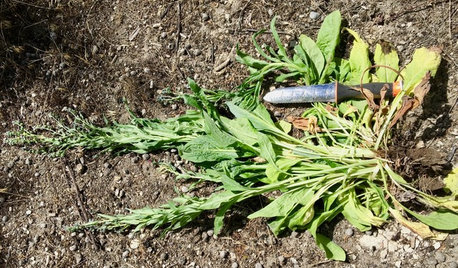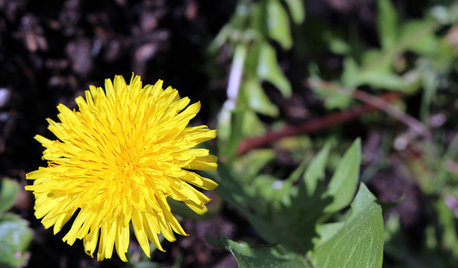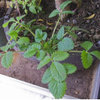Are weeds really bad or just unsightly?
clueless_in_alabama
14 years ago
Related Stories

GARDENING GUIDESZen Weeding: The Smart Way to Weed Your Garden
Be mindful about keeping weeds from taking hold in your yard by knowing when and how to get rid of each type
Full Story
GARDENING GUIDESGreat Design Plant: Bugle Weed, a Quick Ground Cover
It’s highly adaptable, suppresses weeds, reduces erosion and provide weeks of bright flowers. Just watch for invasiveness
Full Story
GARDENING GUIDES5 Weed-Smothering Ground Covers
Let these landscape plants do the dirty work of choking out weeds while you sit back and enjoy the view
Full Story
HOUZZ TOURSHouzz Tour: Just-Right Realism in an Eclectic Family Home
With 1,100 square feet, a modest budget and 2 young children, a San Francisco family embraces a creative DIY approach
Full Story
GARDENING GUIDESWhat’s in a Name? See 6 Wildflowers That Aren’t ‘Weeds’ at All
Dispel the stereotypes of weeds and try these wildlife-supporting native wildflowers in your garden
Full Story
EDIBLE GARDENSNatural Ways to Get Rid of Weeds in Your Garden
Use these techniques to help prevent the spread of weeds and to learn about your soil
Full Story
GARDENING GUIDESWhy Your Garden Might Be Full of Weeds
Tired of battling unwanted plants? These surprising reasons for weediness point the way to cures
Full Story
WINDOW TREATMENTS6 Ways to Deal With a Bad View Out the Window
You can come out from behind the closed curtains now. These strategies let in the light while blocking the ugly
Full Story
GARDENING GUIDES5 Ways to Naturally Win the Weed War
Show irksome weeds no mercy with these tricks for combating them sans chemicals
Full Story
GARDENING AND LANDSCAPINGBid Bad Garden Bugs Goodbye and Usher In the Good
Give ants their marching orders and send mosquitoes moseying, while creating a garden that draws pollinators and helpful eaters
Full StoryMore Discussions







diannelmt
Kimmsr
Related Professionals
Camas Landscape Architects & Landscape Designers · Norton Shores Landscape Architects & Landscape Designers · Rancho Palos Verdes Landscape Architects & Landscape Designers · Annandale Landscape Contractors · Chelmsford Landscape Contractors · Desert Hot Springs Landscape Contractors · Framingham Landscape Contractors · Gainesville Landscape Contractors · Harrisburg Landscape Contractors · Indio Landscape Contractors · Lakeville Landscape Contractors · New Brighton Landscape Contractors · Old Saybrook Landscape Contractors · Wilsonville Landscape Contractors · Tyngsboro Landscape Contractorsmaifleur01
clueless_in_alabamaOriginal Author
diannelmt
clueless_in_alabamaOriginal Author
maifleur01
diannelmt
clueless_in_alabamaOriginal Author
maifleur01
diannelmt